St. Gellért came to Hungary at the beginning of Hungary's conversion to Christianity, where he helped strengthen Christianity as a bishop and the educator of Prince Emeric, he was the first Hungarian martyr. The main patron saint of the Diocese of Szeged-Csanád is celebrated on 24 September. His memory is preserved in Budapest by many monuments.
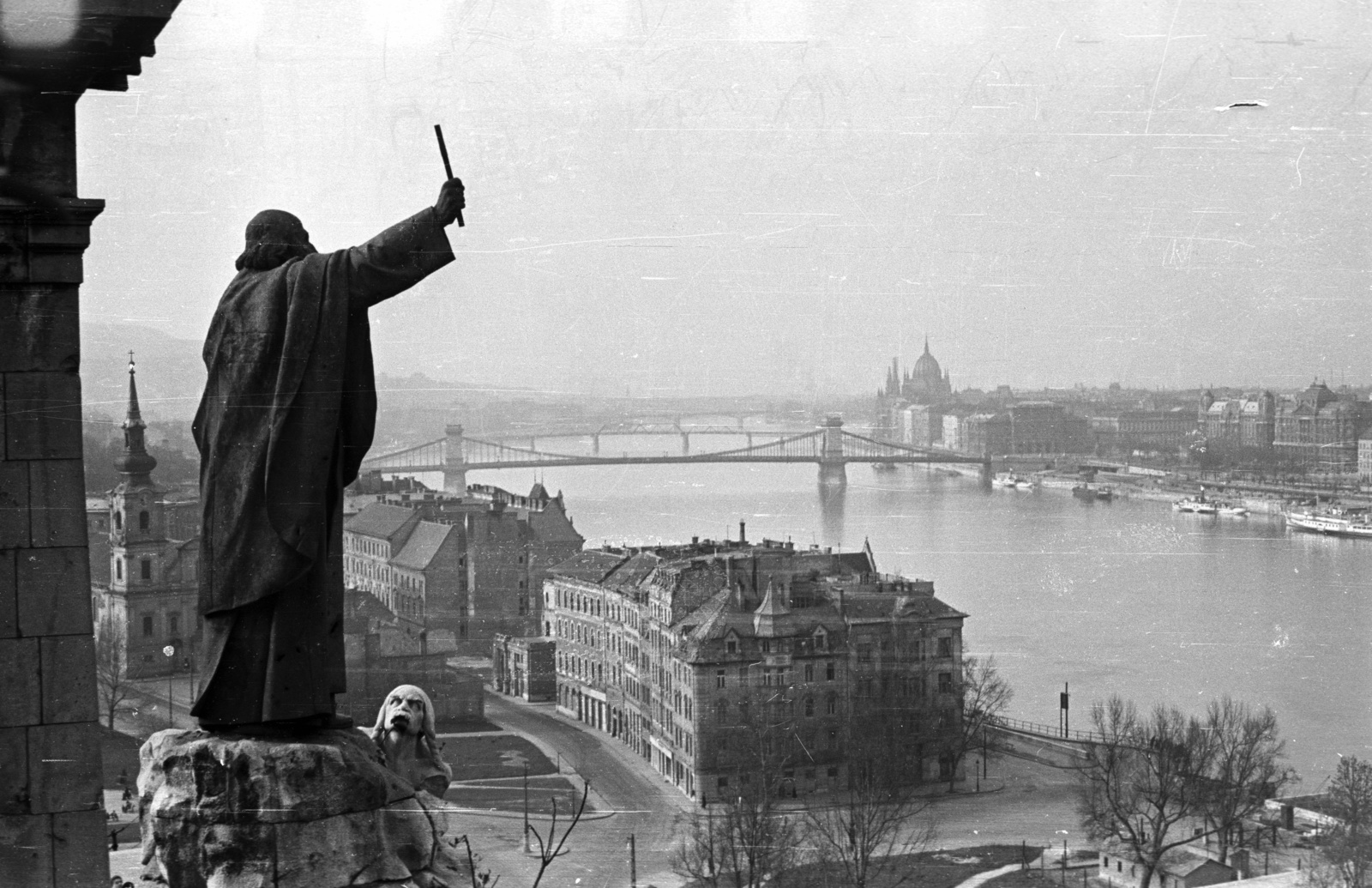
One of the most famous statues of St. Gellért at the Buda end of the Elizabeth Bridge, on the side of Gellért Hill. Photo taken in 1953 (Source: Fortepan / No.: 51905)

The first statue of a Hungarian martyr holding a cross is a defining element of Gellért Hill since 1904, where, according to legend, he died a martyr's death (Photo: Balázs Both / pestbuda.hu)
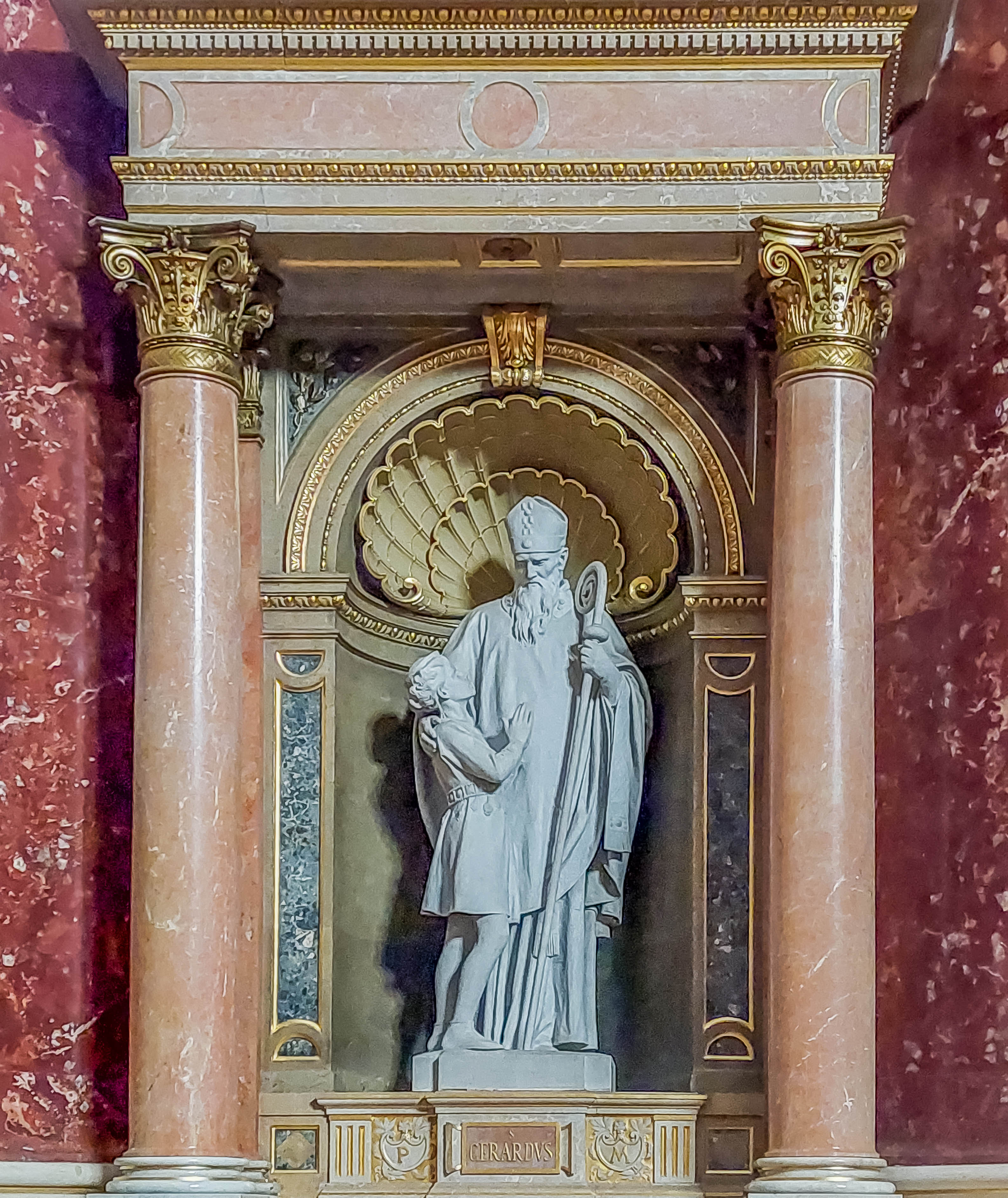
The first statue of a Hungarian martyr holding a cross is a defining element of Gellért Hill since 1904, where, according to legend, he died a martyr's death (Photo: Balázs Both / pestbuda.hu)
The life of Bishop Gellért
Gellért was born in 977 in Venice, Italy, as a descendant of a wealthy noble family. Even the early part of his life was surrounded by miracles. After his birth, he seemed not going to survive, so his parents took him to an island for Benedictines to pray for. The family vowed that if Gellért was saved, he would dedicate his life to God. Miraculously, Gellért was healed and soon became one of the most talented Benedictine monks, who was elected a scribe by his fellow monks at the age of twenty-five.
He embarked on a pilgrimage to the Holy Land in 1015, but got involved in a storm and ended up off the coast of Istria. He then came to Hungary to the later Bishop St. Mór in Pécs, where he managed to persuade him to go to Székesfehérvár. Here he met King Stephen, who asked him to be the educator of his son, Emeric. He taught the prince for seven years, then continued his prayers for Hungarian Christianity in Bakonybél as a hermit. In 1030, King Stephen commissioned him to organize the diocese of Csanád. After organizing the diocese, Gellért organized a chapter school to ensure the supply of priests and had several churches built.

Details of the legend of St. Gellért: St. Gellért before King St. Stephen; In hermitage; Election as bishop; Preaching to the People (Source: Hungarian Anjou Legend)
After the death of Stephen, during the religious and throne conflicts, his life was in constant danger, and in one of his visions he foretold his tragedy. The pagan rebels of Vata attacked him on 24 September 1046, with a shower of stone, but miraculously the stones did no damage to Gellért. Therefore, the pagans toppled his carriage and killed him. The circumstances of his death have been preserved in tradition in several ways, the best known of which is that he was pushed deep from the rock of Mount Kelen, later named after him.
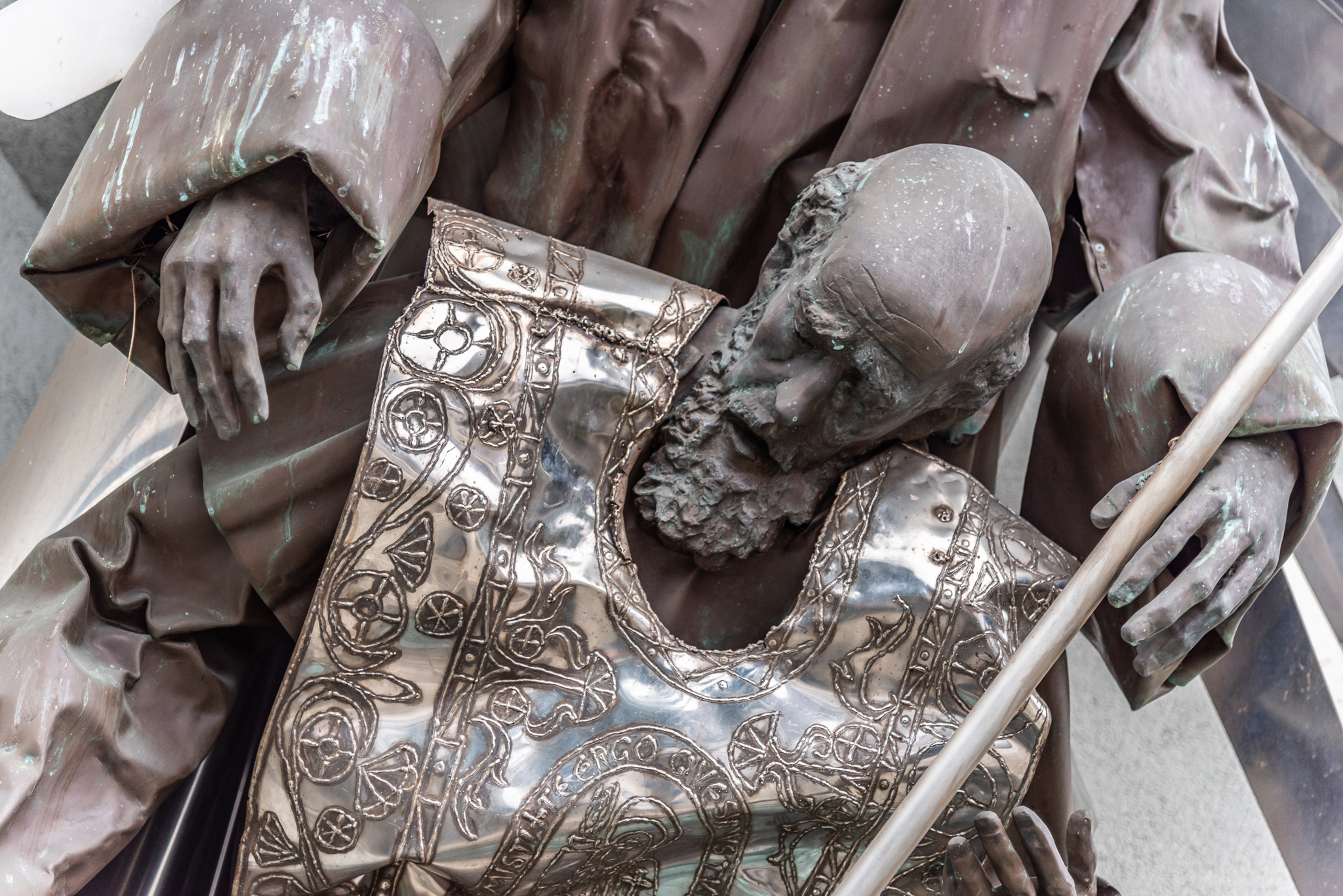
The statue depicting the martyrdom of St. Gellért on the gable of the parish church of St. Gellért in Kelenföld, by Imre Varga (Photo: Balázs Both / pestbuda.hu)
“As soon as he arrives at the river Danube, behold, a great multitude of ungodly people are pouring around him, and stones are thrown at the father sitting in the carriage, but these have not reached him for divine protection. The father confronted them with a blessing and a sign of the holy cross,” reads the little legend of Bishop St. Gellért (translated by Flóris Szabó).
“And following the example of St. Stephen the first martyr, the first martyr of Pannonia, kneeling on the ground, cried out loudly: Lord, Jesus Christ, do not judge them for their sin, for they do not know what they are doing. “But seeing this, they became even more angry, attacked him, and turned his carriage upside down on the banks of the Danube. There he was dragged off his carriage, placed on a wheelbarrow, and pushed off the hill of Kelenföld,” reads the great legend of Bishop St. Gellért (translated by Flóris Szabó).
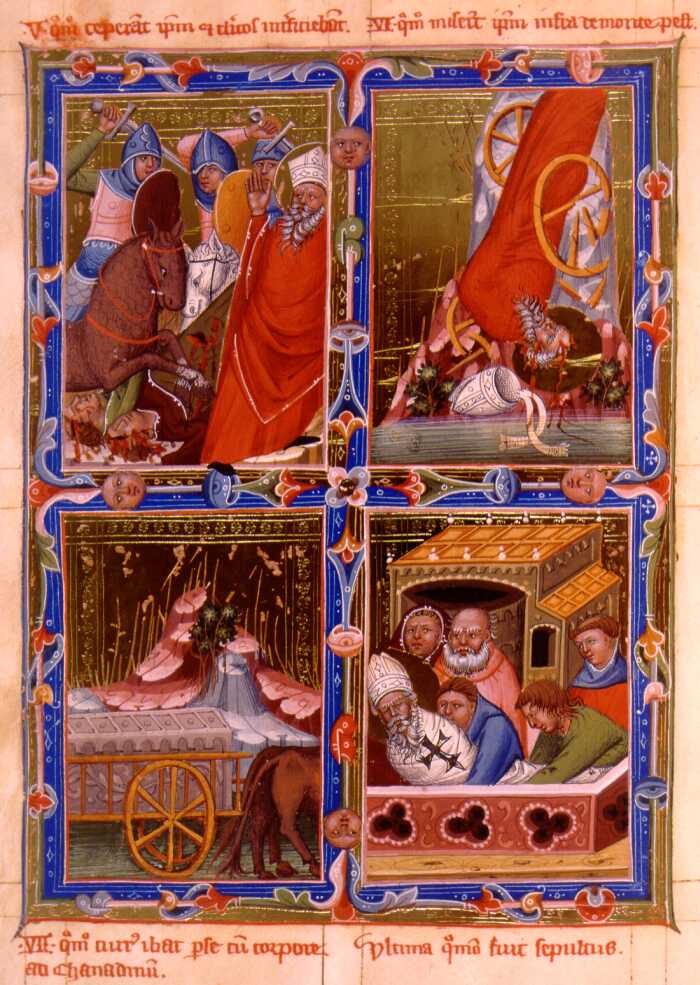
Details of the legend of St. Gellért: Rebellious pagans kill priests; St. Gellért is pushed off the mountain; The carriage departs itself to Csanád with the body of the Saint; Burial of the Saint (Source: Hungarian Anjou Legend)
Gellért's body was taken to the Church of the Assumption in Pest, which is today's Inner City Parish Church in Pest, and is located opposite Gellért Hill on the other side of the Danube. His remains were later transferred to Csanád, but his heel and vertebral bone relics can be found in the altar of the Inner City Parish Church since 2002, which were preserved in Murano until then.
Shortly after his death, Bishop Gellért was ordained a saint in 1083, during the reign of St. Ladislaus, along with King Stephen, Emeric and two monks.
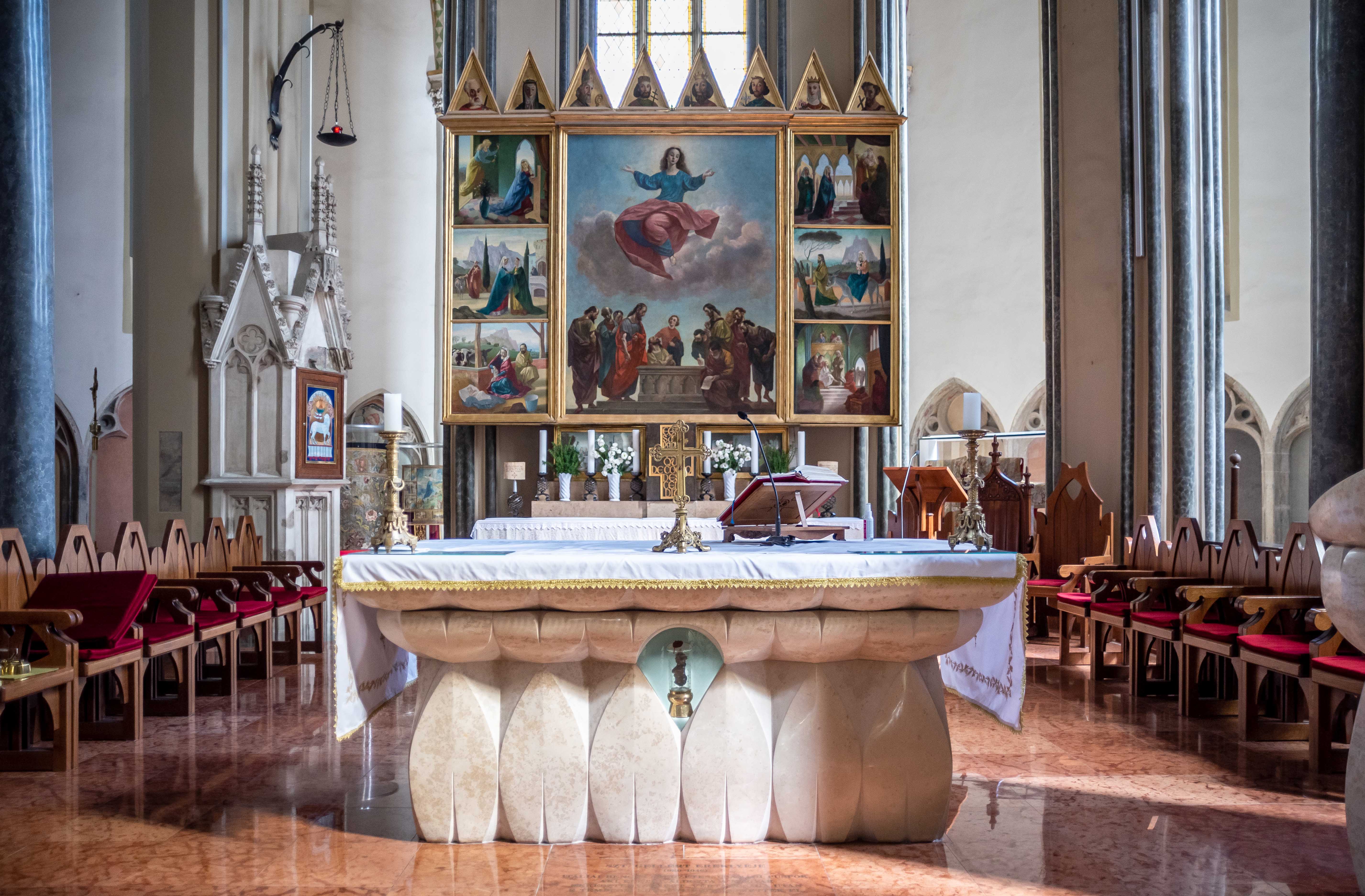
The altar of the Inner City Parish Church, where the relics of St. Gellért can be found (Photo: Balázs Both / pestbuda.hu)
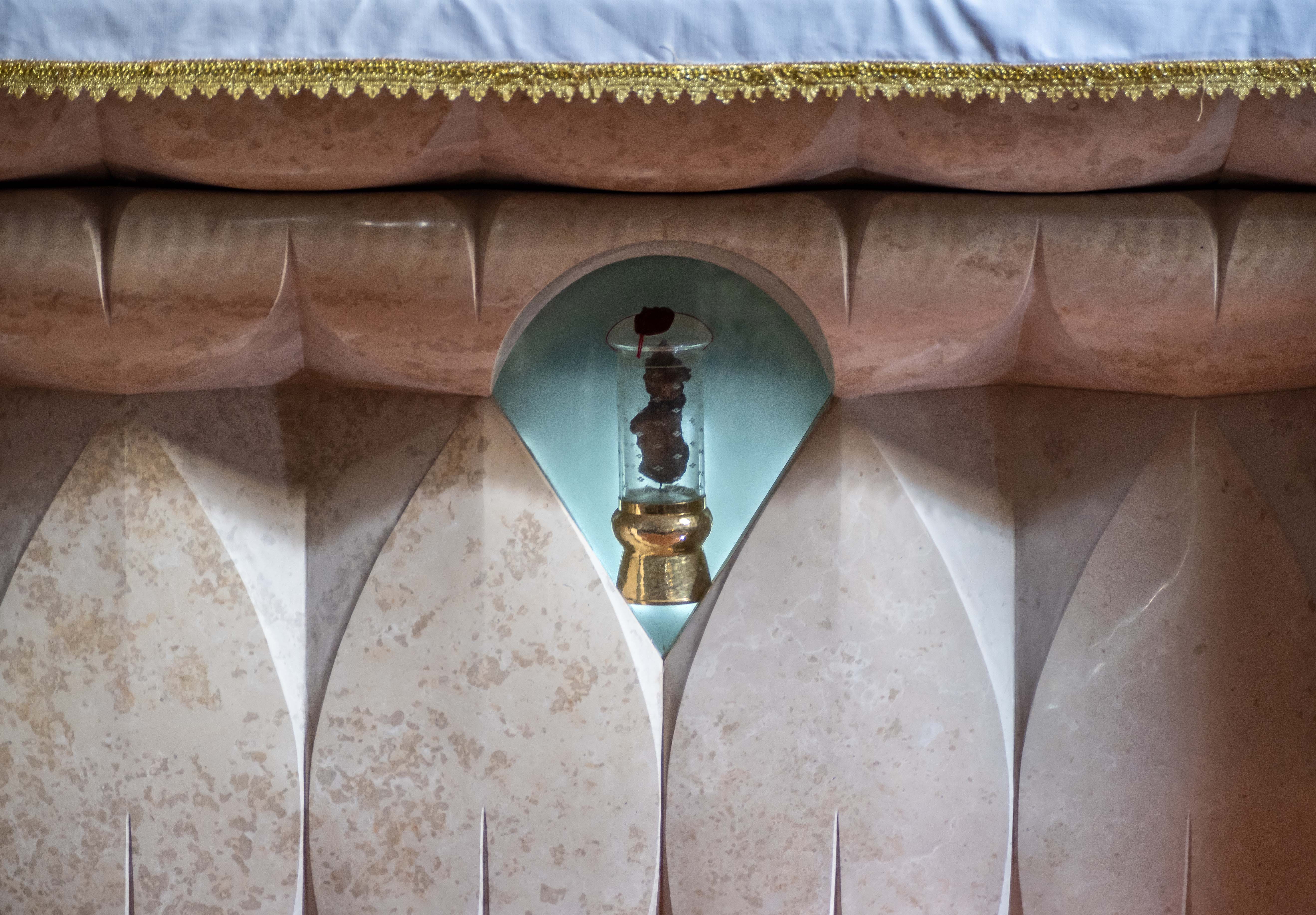
The heel and vertebral bone relics of St. Gellért was placed on the altar of the Inner City Parish Church in 2002 (Photo: Balázs Both / pestbuda)
The legend of St. Gellért on Gellért Hill
Of course, one of the most characteristic sights of Budapest, Gellért Hill, is best connected to St. Gellért after traditionally he died a martyr's death here. Although this cannot be proved unequivocally historically, it is well known that the mountain was connected to him by several sources in the 13th century, and from the 15th century onwards, we can also find the name Gellért Hill, the spread of which was interrupted by the Turkish occupation. The name Gellért Hill returned to the public consciousness by the 18-19th century, although at the suggestion of Gábor Döbrentei in 1847, on the occasion of the famous vineyard baptism, the mountain was named Kelen-bérc, so it is “officially” still called that today.
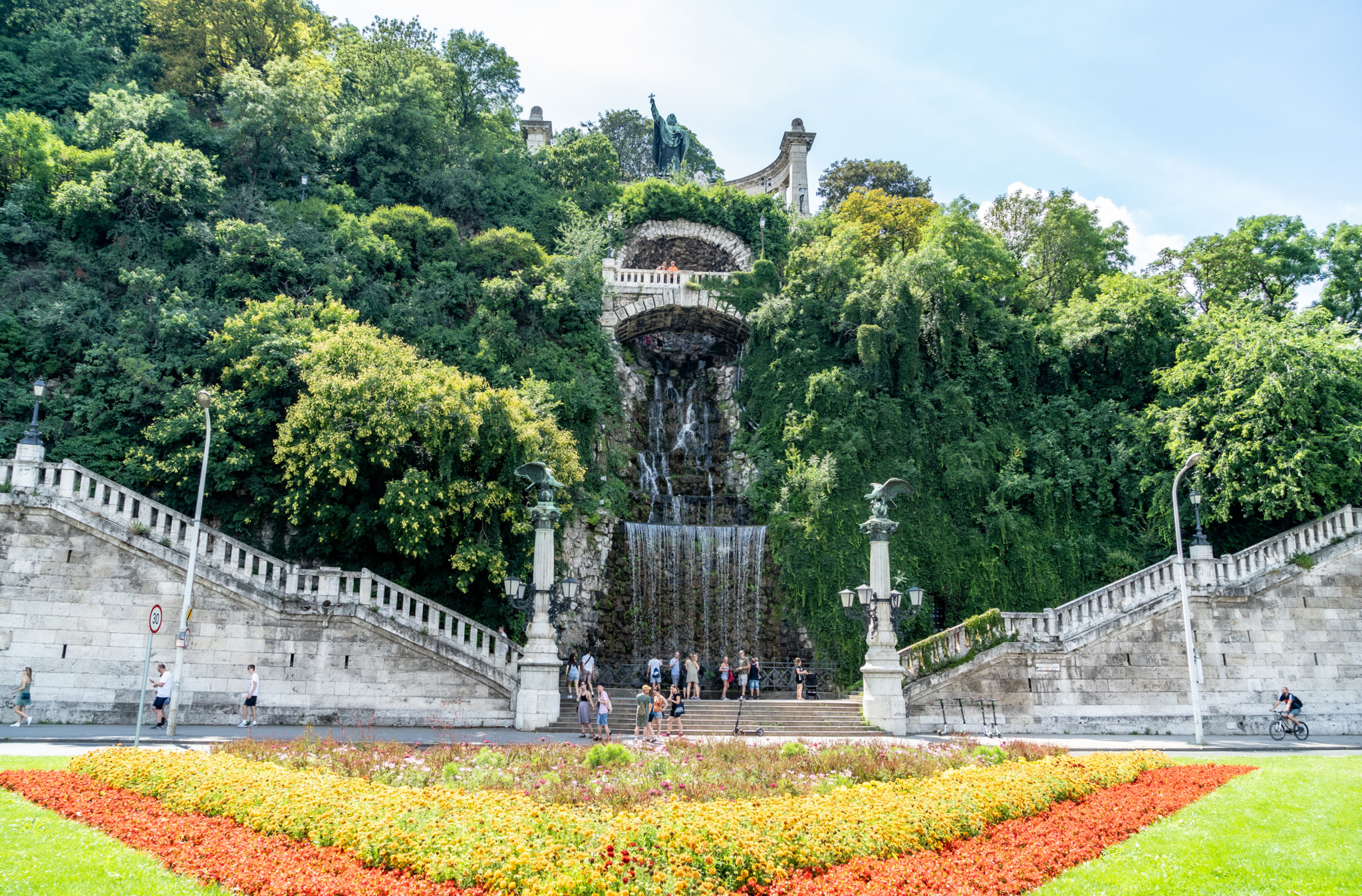 The Gellért statue nowadays with the waterfall and the two turul birds (Photo: Balázs Both / pestbuda.hu)
The Gellért statue nowadays with the waterfall and the two turul birds (Photo: Balázs Both / pestbuda.hu)
The Gellért statue on Gellért Hill is one of the ten statues donated by Franz Joseph. It was originally designed to be smaller in size, but in order not to blend into its surroundings, the bronze work, made by sculptor Gyula Jankovits in 1904, eventually became seven meters high. At the foot of the Gellért statue you can also see a pagan Hungarian soldier, which is the work of Aladár Gárdos, and the colonnade of the statue was designed by the architect Imre Francsek.
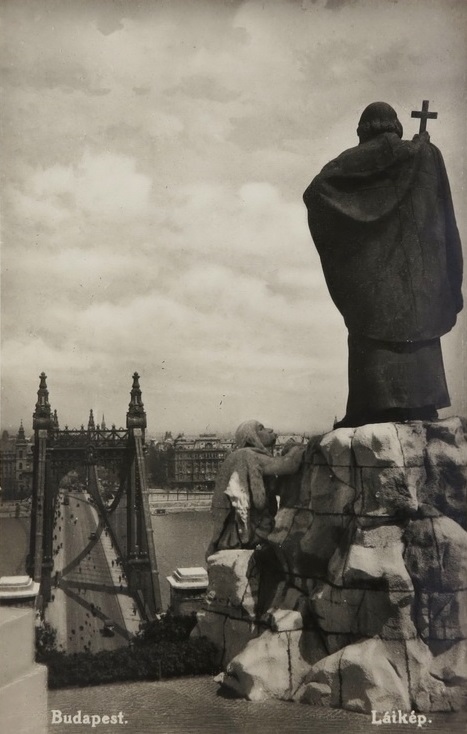
A postcard from the beginning of the 20th century, on which the statue of the pagan soldier can also be seen at the foot of Gellért
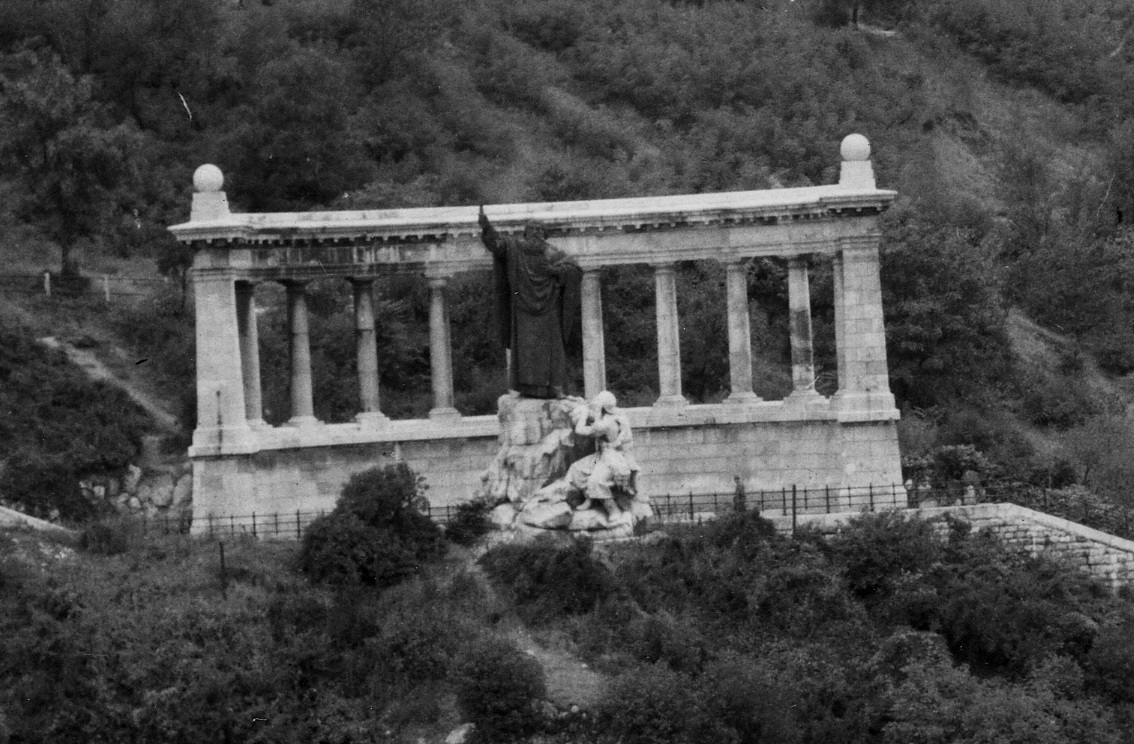 Composition of the statue of St. Gellért photographed from the Buda gate of the Elizabeth Bridge under construction in 1963 (Source: Fortepan / No.: 26464)
Composition of the statue of St. Gellért photographed from the Buda gate of the Elizabeth Bridge under construction in 1963 (Source: Fortepan / No.: 26464)
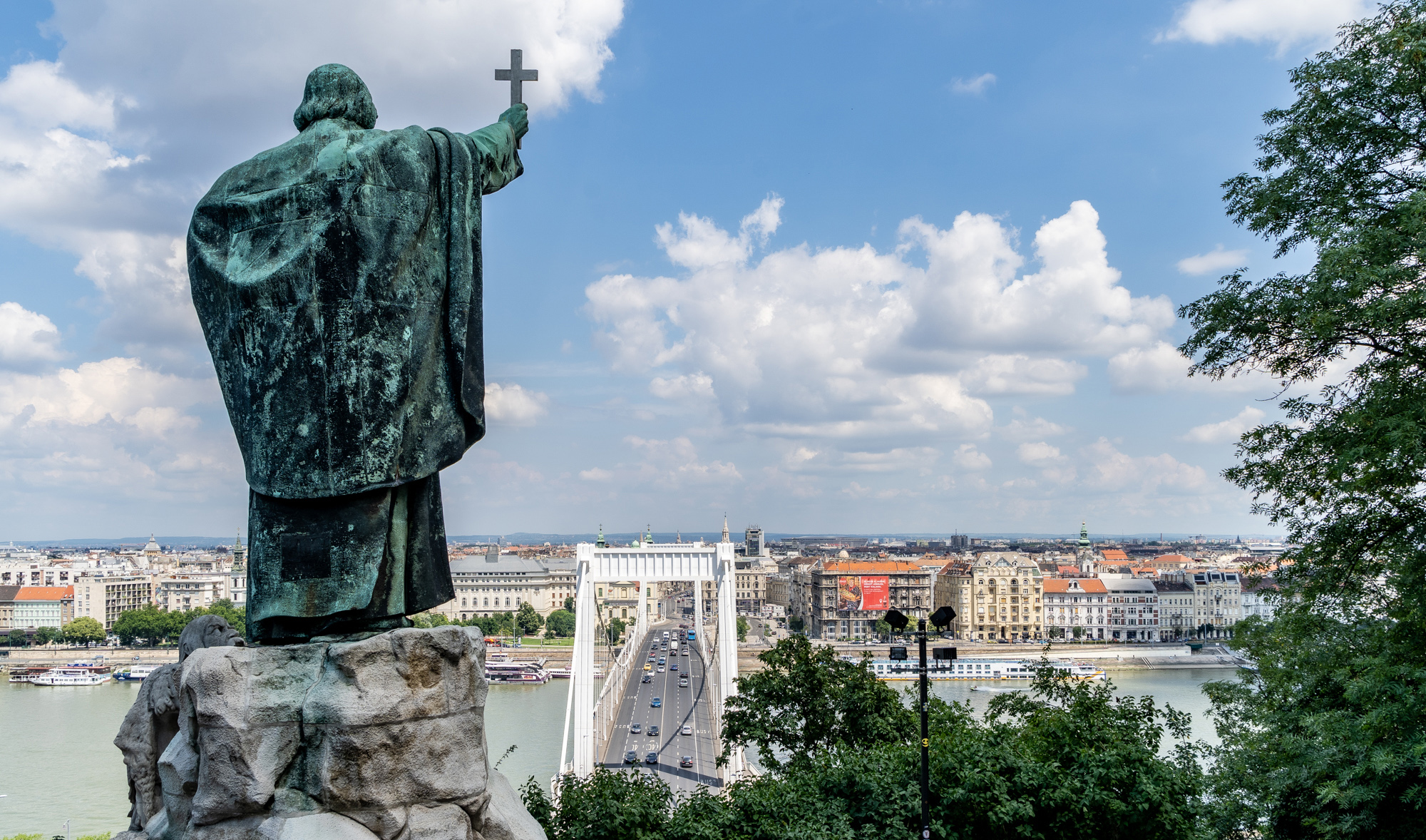
The panorama of Budapest from Gellért Hill, next to the statue of the bishop (Photo: Balázs Both / pestbuda.hu)
The panorama of Pest from the top of Gellért Hill is an unparalleled sight, but not only on the hillside is the memory of St. Gellért, but next to the road leading to the Citadel you can see the recently renovated Gellért legend fountain created by sculptor Ferenc Medgyessy in 1943.
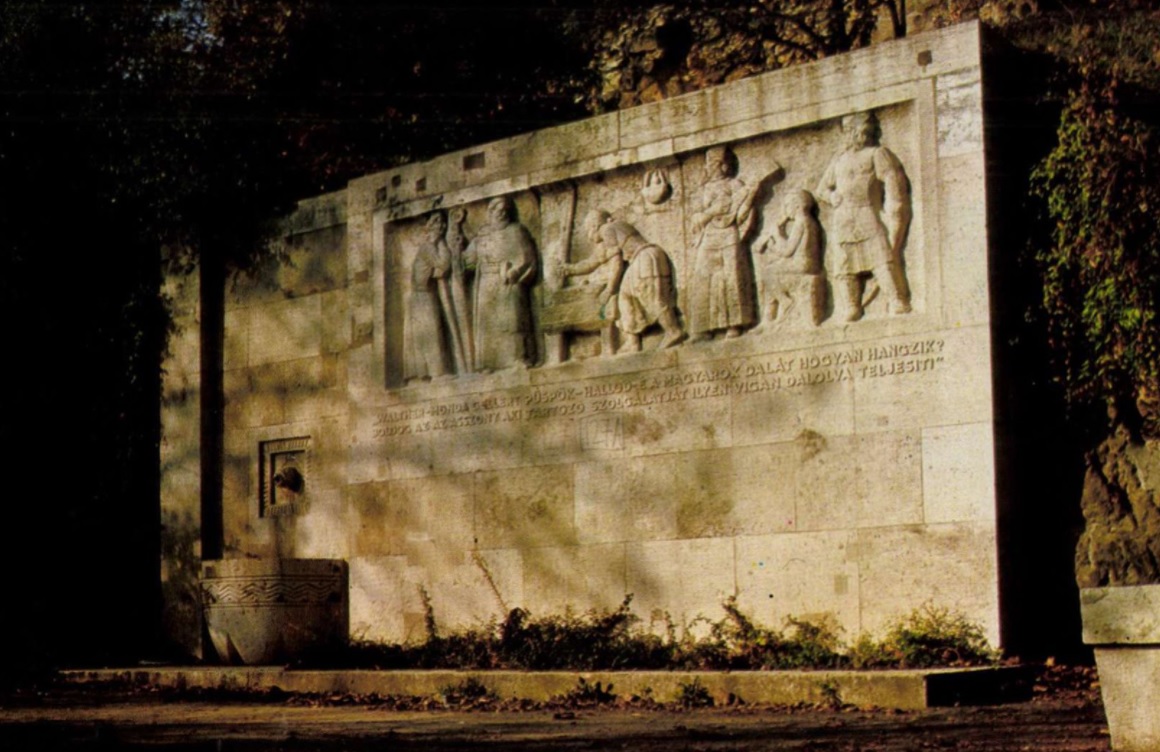
The Gellért Legend Fountain is also located on Gellért Hill, with a detail of one of the legends of St. Gellért (Source: Művészet, January 1981)
The memory of the first Hungarian martyr in the capital
But it is not only the altar of Gellért Hill and the already mentioned Inner City Parish Church that preserves the memory of the first Hungarian martyr. In many places in the capital we can meet the figure of St. Gellért. On the façade of the Church of St. Catherine of Alexandria in Tabán, along with several other statues, there is also a figure of St. Gellért as an educator with a cross. A touching depiction on the facade of the Church of St. Gellért in Kelenföld is also known, where an angel elevates the patron saint of the parish to heaven.
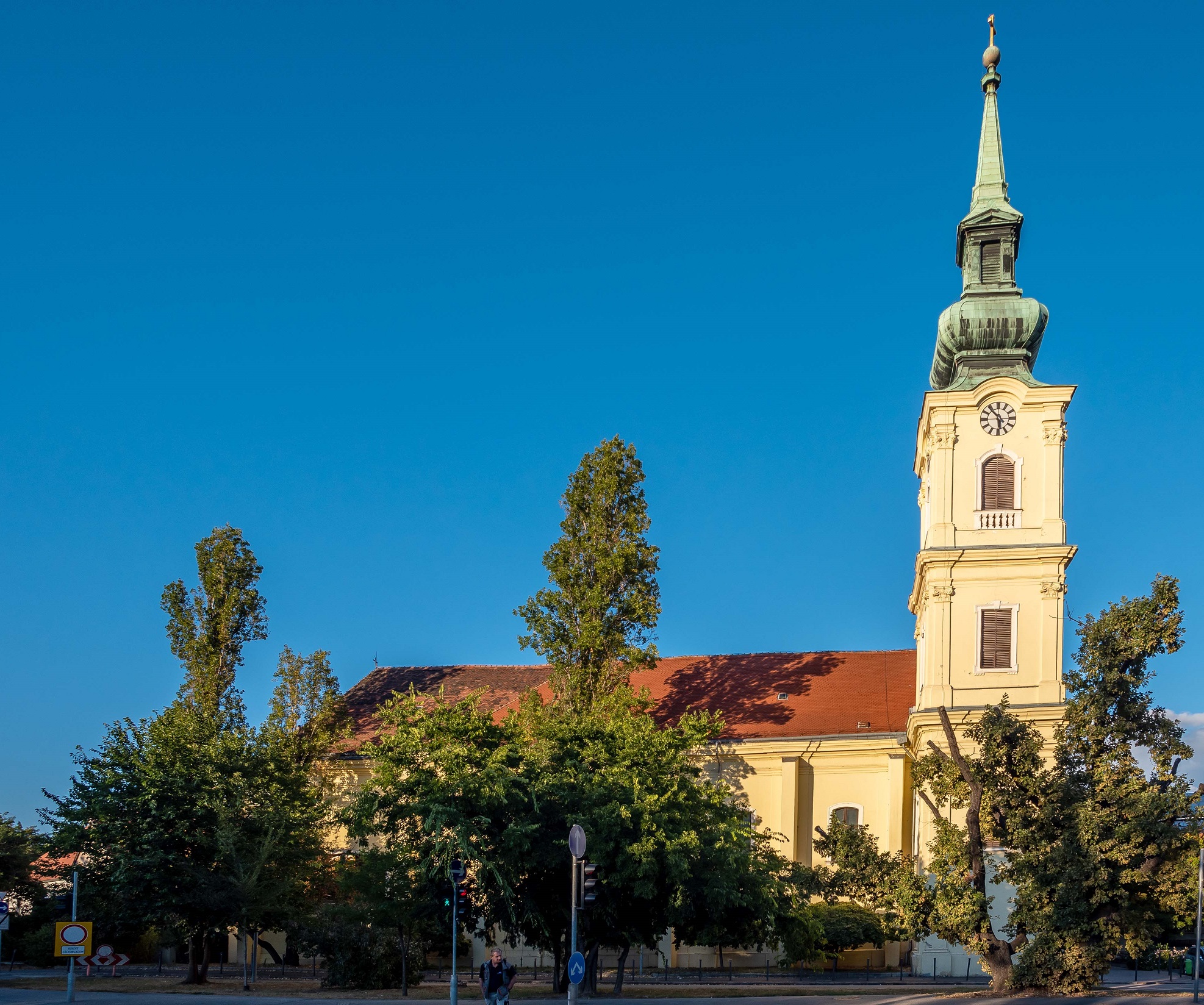
The Church of St. Catherine of Alexandria in Tabán (Photo: Balázs Both / pestbuda.hu)
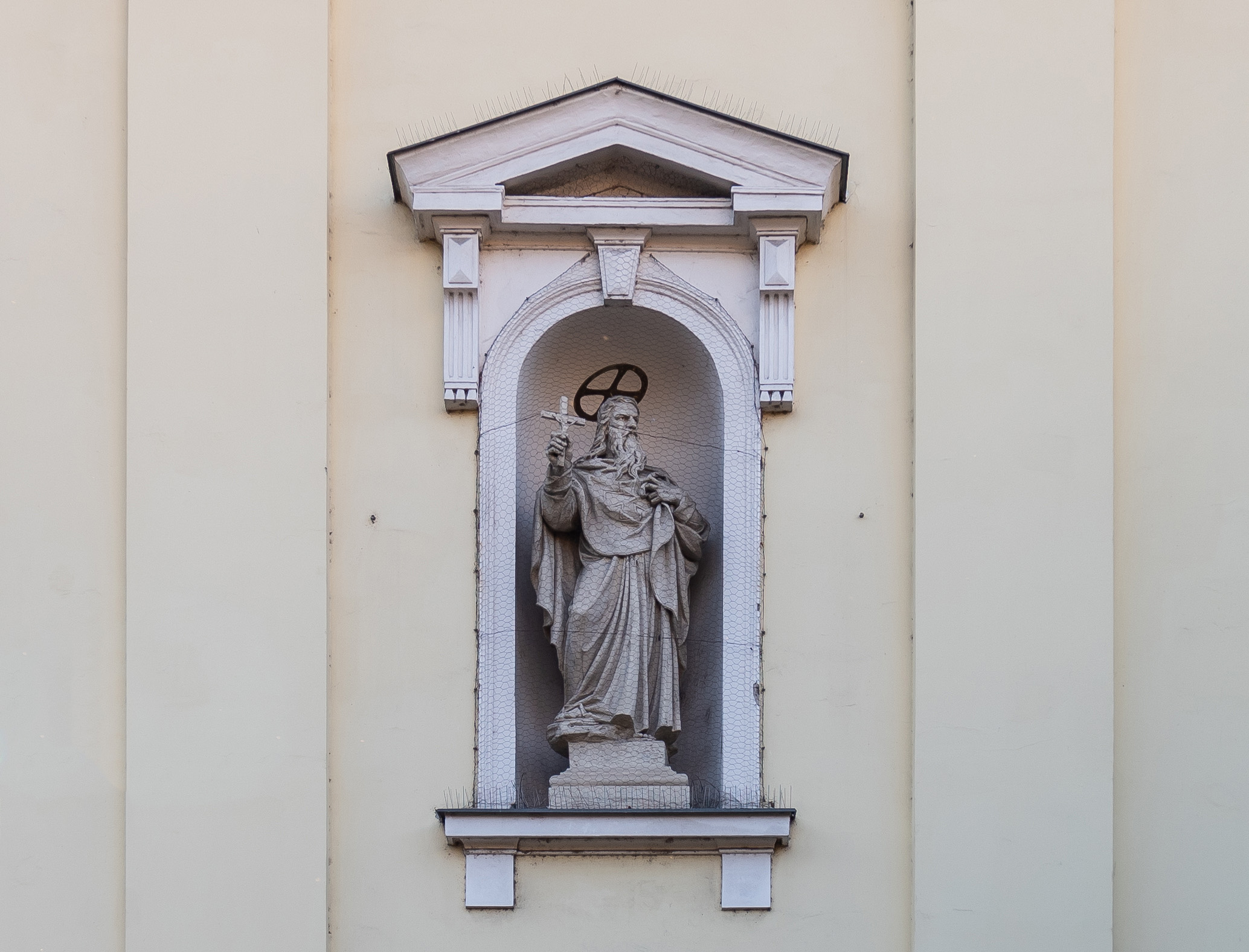 Statue of St. Gellért on the facade of St. Catherine's Church in Alexandria (Photo: Balázs Both / pestbuda.hu)
Statue of St. Gellért on the facade of St. Catherine's Church in Alexandria (Photo: Balázs Both / pestbuda.hu)
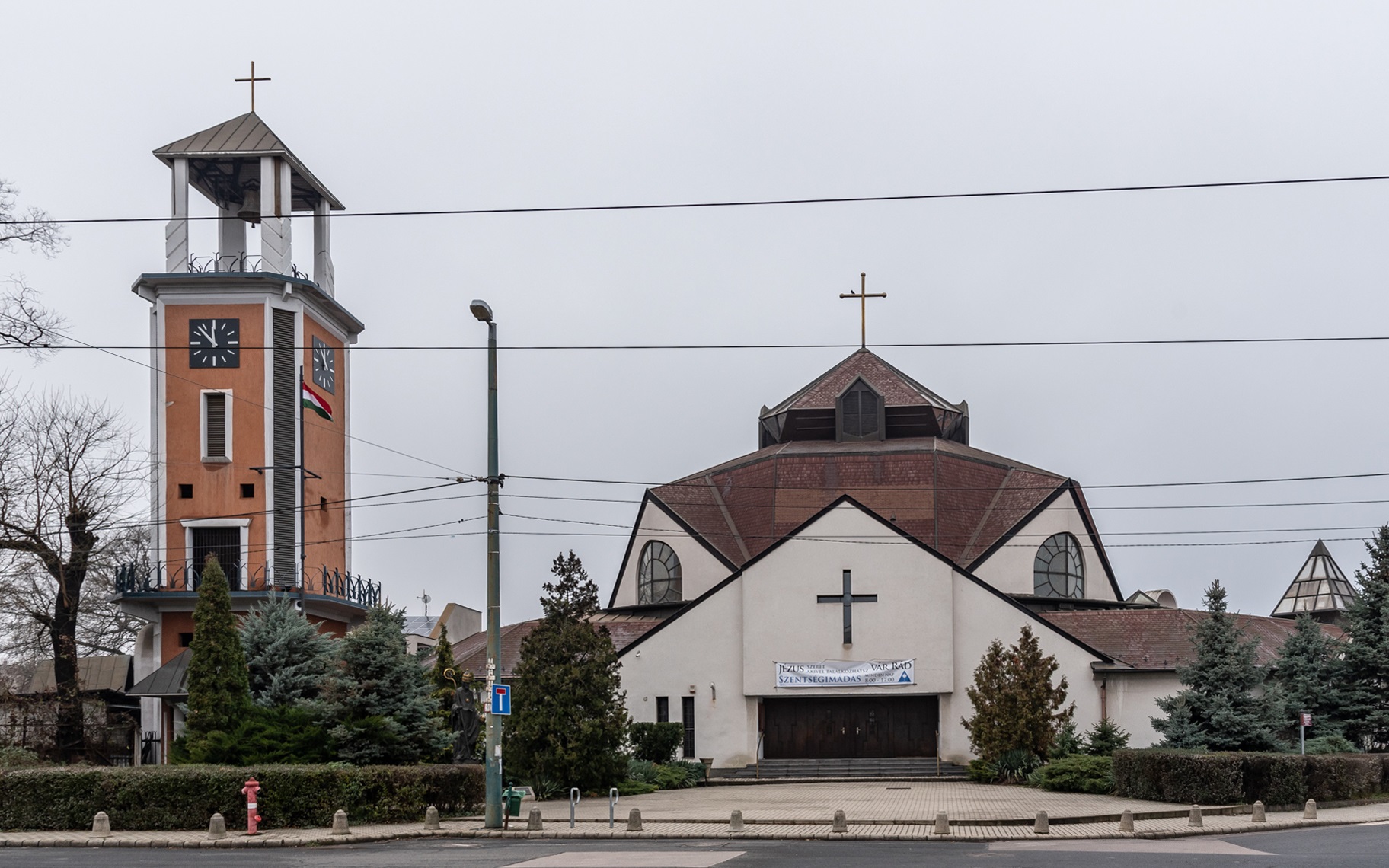
The parish church of St. Gellért in Kelenföld (Photo: Balázs Both / pestbuda.hu)
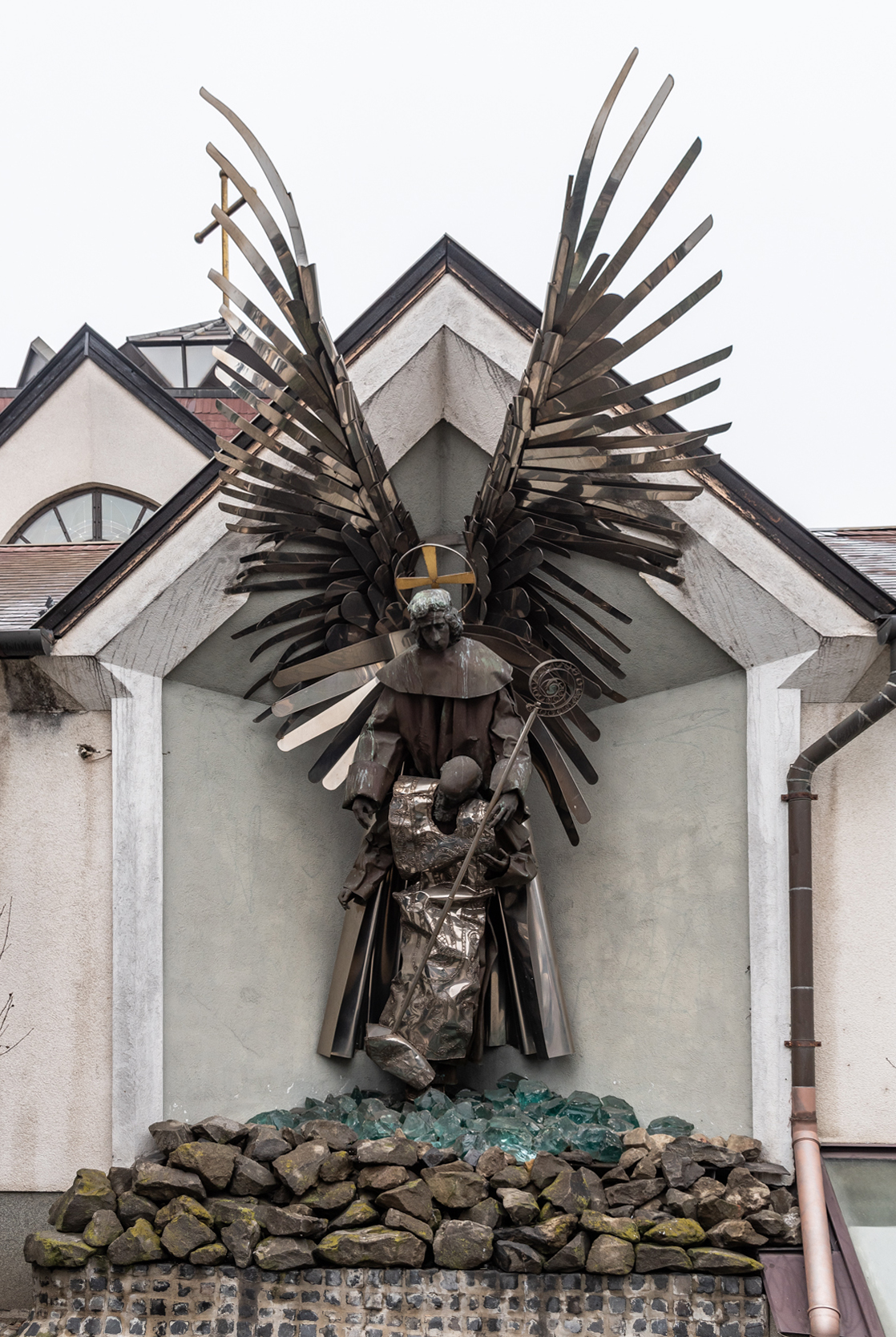
The work of Imre Varga on the facade of the St. Gellért Parish Church (Photo: Balázs Both / pestbuda.hu)
His figure also appears in several places inside the church. An example is the statue of St. Gellért by Alajos Strobl in St. Stephen's Basilica, erected in 1905, which depicts Gellert as an educator. The figure of Gellért can be found on the glass windows of several churches, the most famous of which is perhaps in the sanctuary of the Church of St. Margaret of the Árpád Dynasty, which was made in the workshop of the glass artist Miska Róth in 1933.
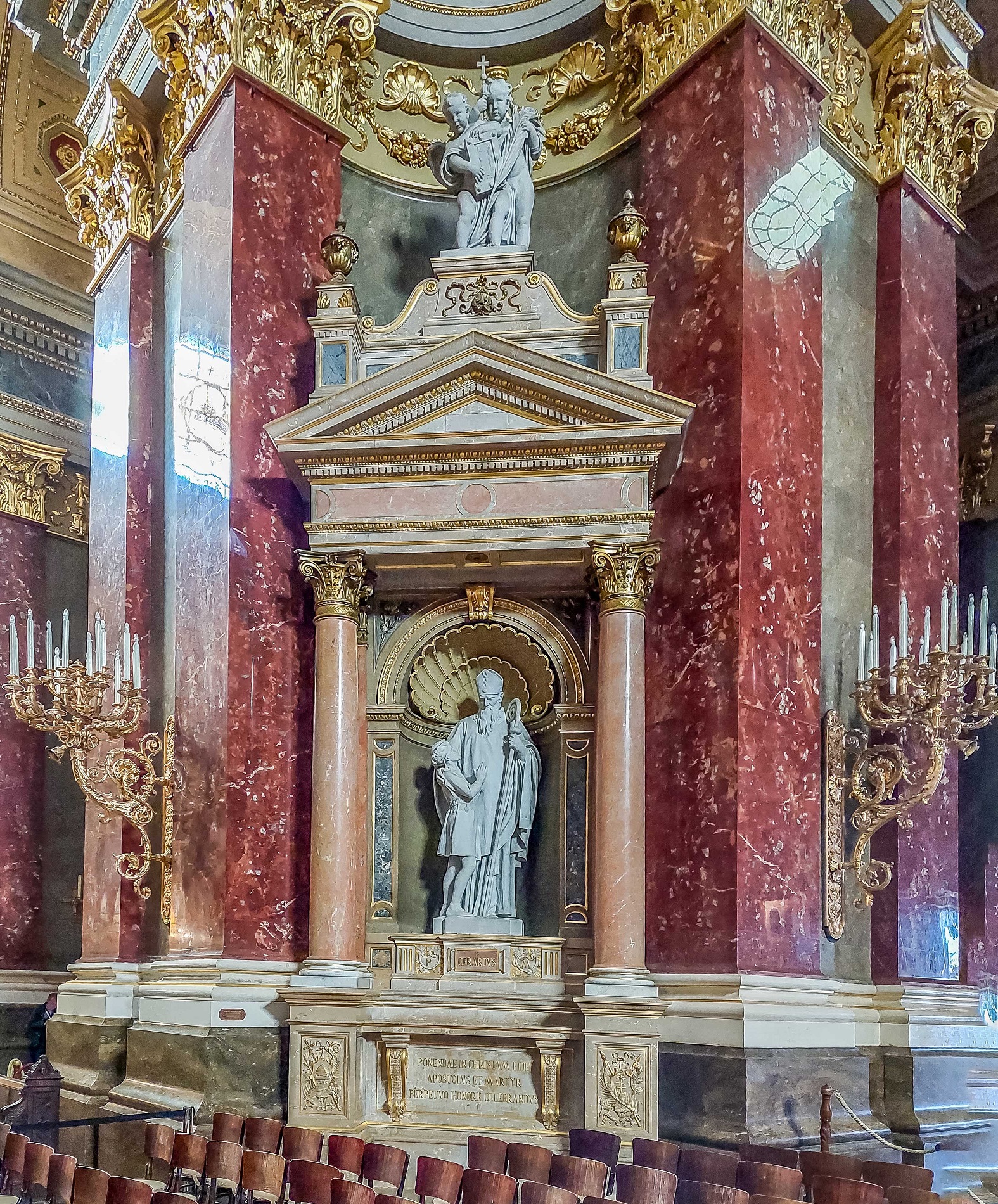
Statue of St. Gellért under the dome of St. Stephen's Basilica by Alajos Strobl (Photo: Balázs Both / pestbuda.hu)
His name and memory are also preserved in Budapest by educational institutions. The St. Gellért Kindergarten is in the 9th District and the St. Gellért Catholic Primary and Secondary School is located in the 1st District, in Krisztinaváros. There is a two-meter carved statue of St. Gellért in the school hall.
Cover Photo: The statue of St. Gellért towering over Budapest (Photo: Balázs Both / pestbuda.hu)

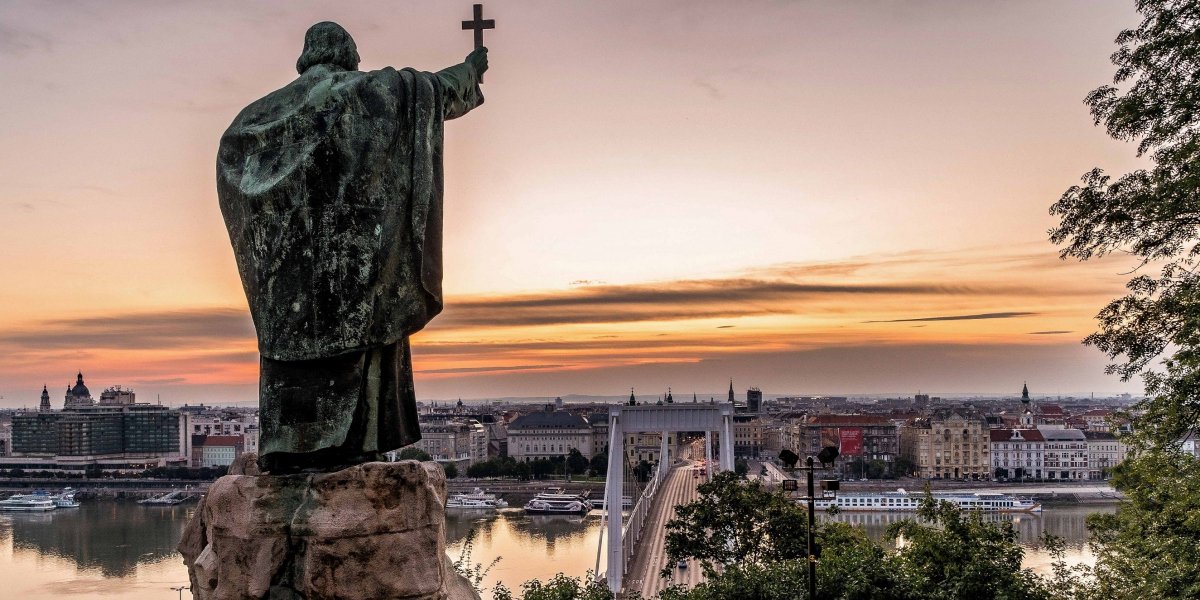
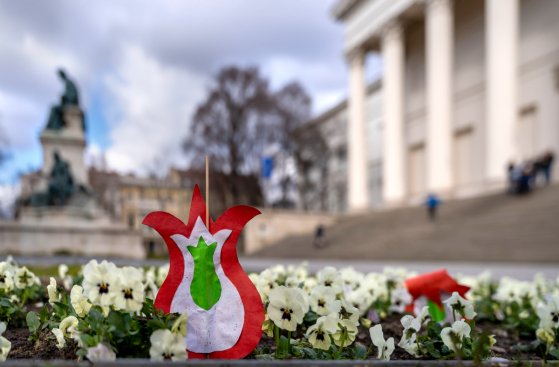

































Hozzászólások
Log in or register to comment!
Login Registration